Schneider Shorts of 26 April 2024 – celebrity retraction in Science, An Italian papermiller under investigation in Norway, papermillers get own journal, an English professor asks for privacy, with publishers misbehaving, retraction retracted, and an Australian university finally finding out who faked everything.
Table of Discontent
Science Elites
- The most productive researcher in Europe – Filippo Berto under investigation in Norway
- Deeply concerning and unacceptable – Farooq Sher demands his privacy
Scholarly Publishing
- My dream has come true – Navid Rabiee and his fellow papermillers get their own journal
- Outdated typesetting practice – Nature Medicine defends Pier Paolo Pandolfi and Carlos Cordon-Cardo from slander
- Age of Aquarius – René Aquarius caught Elsevier doing a naughty thing
Retraction Watchdogging
- A feeling of anger and injustice – Laurie Glimcher and Claudio Hetz lose Science paper
- All other authors are not responsible – scapegoat appointed in Bhosale brothers fraud case
- Not considered satisfactory – retraction for Palermo cheaters
- We apologise to the authors – Taylor & Francis journal retracts retraction, retracts again
- The role of journal reviewers – Egyptian author blames peer reviewers
Science Elites
The most productive researcher in Europe
Filippo Berto made Norwegian news again, but not the way he is used to. As a reminder, this Italian papermiller was professor at the Norwegian University of Science and Technology (NTNU) and is presently professor and endowed stool at the Sapienza University of Rome. Read about Pippo in the Coda here:
Karimipour Saga III: All roads lead to Rome
“The academic career of D’Orazio is tightly coupled to that of Karimipour since she hosted him at Sapienza. Of the 57 papers she declared authorship for, 25 (44%) are published together with Karimipour.” – Maarten van Kmapen
Pippo the Papermill Gnome now has 5 retractions (most recent in last week’s Friday Shorts), with more retractions expected, and he is under misconduct investigation by NTNU. He is not being investigated by the Sapienza University because Italy.
The newspaper Universitetsavisa (UA) brought a long read on 19 April 2024 (Google-translated):
“Until autumn 2023, the Italian researcher and professor Filippo Berto was employed at NTNU. For large parts of this period, he was both NTNU’s and Norway’s most published author, and was referred to as NTNU’s star researcher.
There have been many media reports. “Most immigrants at the top of publishing. And no one beats Italian Filippo Berto” , wrote Forskerforum in 2019.
– My goal is to be the most productive researcher in Europe in the field of engineering, actually, Berto told Universitetsavisa at the time.
In 2023, Khrono wrote that Norway’s most publishing researcher has published an average of two articles a week.“
NTNU made huge money with Berto’s papermilling. They could just have kept everything hush-hush, like other universities do in such cases. Especially since Berto is gone back to Italy where nobody minds.
UA continues:
“In November 2023, Professor Angus Wilkinson at the University of Oxford becomes suspicious of Berto’s articles, and begins to investigate them more closely.
He finds many suspicious articles, and over the next few months he notifies the journals where the articles have been published. He also posts his concerns on Pubpeer,“
Luca Susmel, Editor-in-chief of the Elsevier journal Theoretical and Applied Fracture Mechanics which retracted one of Berto’s papers, is quoted by UA:
“The investigations involved not only this article, but several other articles from various journals. As a consequence, Filippo Berto is no longer part of our editorial board . The decision was based on this specific incident, in addition to several similar, recent incidents says Susmel, and refers, among other things, to another example mentioned by UA . He states that Berto has been removed from the editorial boards of the International Journal of Fatigue and Engineering Failure Analysis .
– I have known Filippo Berto personally for 25 years. This is an unfortunate story that I definitely did not want to witness, says Susmel.”
For 25 years, they just assumed that these excessive Chinese, Iranian and russian “collaborations” were not papermilling but proof of Berto’s science genius?
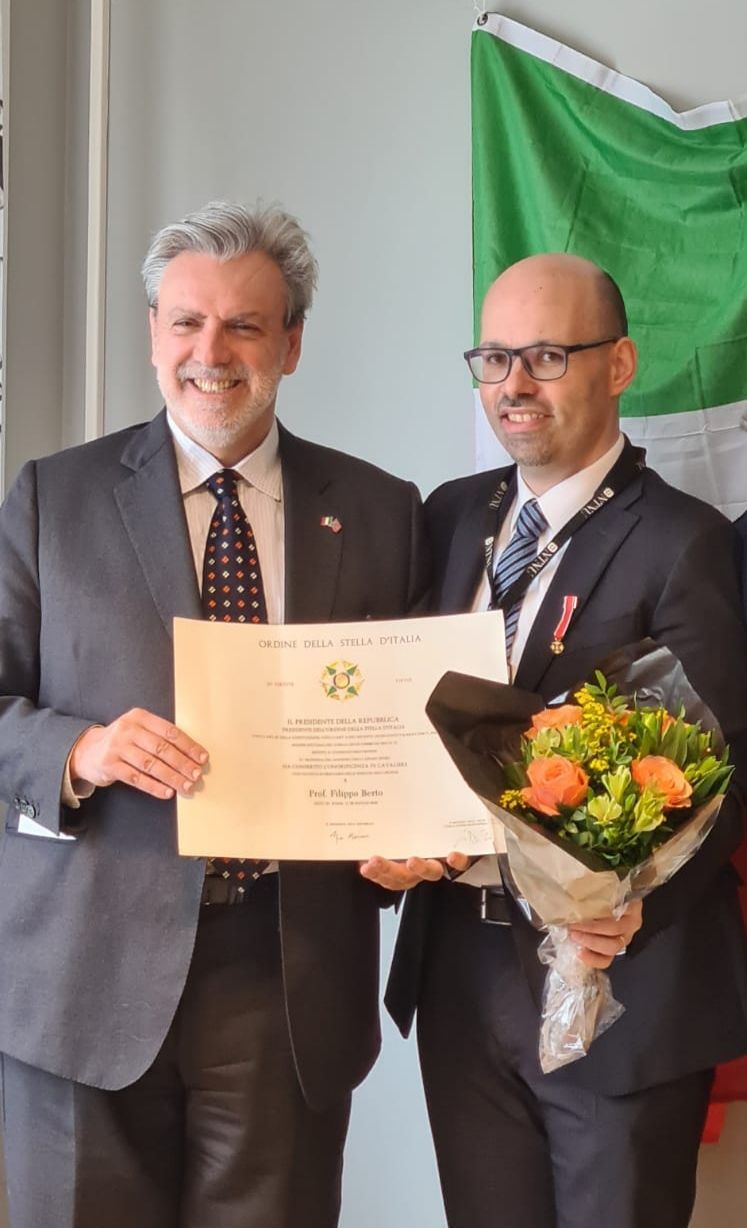
“Oslo, 6 April 22 – The Italian ambassador to Norway, Alberto Colella, awarded prof. Filippo Berto with the honor of Knight of the Order of the Star of Italy, awarded to him by the President of the Republic in recognition of his extraordinary scientific and research career. […] “Prof. Filippo Berto is one of the most productive researchers in Norway: independent investigations have placed him in first place in the last two years among the most active scientists and researchers in the country for quality and quantity of publications. A true Italian excellence”, said the amb. Colella during the ceremony” (Giornale Diplomatico)
In Norway, University librarian Per Steineide Refseth reported Berto to the Research Ethics Committee at NTNU. UA interviewed its secretary, Thor Bjørn Arlov, who said “we will take up the matter at the committee’s meeting in the forum in May” and that a public statement will be issued.
All attempts by UA to speak to Pippo failed. He doesn’t reply to me anymore either. But he used to! Some quotes:
“I have dedicated all my life to research with daily dedication sacrifying my private life. I have many international collaborations and I am mentoring several young talented researchers. I have always contributed to the papers that have been published making my real best.“
He also announced to have us all arrested:
“I have already reported this to legal authority and web police.”
Deeply concerning and unacceptable
On 4 April 2024, I received (twice) this message form a certain professor at a certain English university:
“Subject: Urgent Request for Removal of Personal Information from For Better Science Website.
Dear Owner/Administrator (For Better Science Website),
I hope this message finds you well. I am writing to address a serious matter concerning the unauthorized publication of my personal information on your website.
Upon visiting your website recently, I was dismayed to discover that my personal data, including my name, family name, family details, work address, contact details, etc. has been made publicly available without my consent. This blatant disregard for privacy rights is deeply concerning and unacceptable.
I wish to bring to your attention that the unauthorized publication of personal information is a violation of international privacy laws, particularly those outlined in the General Data Protection Regulation (GDPR) established by the European Union. The GDPR mandates strict guidelines regarding the collection, processing, and dissemination of personal data, emphasizing the importance of obtaining explicit consent from individuals before publishing their information. Given the severity of this issue and its implications under international law, I urgently request that you take immediate action to remove all instances of my personal information from your website. It is imperative that you comply with the legal obligations outlined in the GDPR and respect individuals’ rights to privacy and data protection.
I kindly ask for your prompt cooperation in resolving this matter. Failure to address this issue in a timely manner may result in further escalation, including formal complaints to relevant regulatory authorities.
Please confirm receipt of this email and provide assurance that the necessary steps will be taken to remove my personal information from your website at your earliest convenience. Should you require any additional information or assistance, please do not hesitate to contact me directly at (Farooq.Sher@ntu.ac.uk).
Thank you for your attention to this urgent matter.
Yours Sincerely,
Dr. Farooq Sher”
I wrote about Farooq Sher, Senior Lecturer at the Nottingham Trent University, at the end of this article, because Sher organised predatory scamferences and publishes papermilled trash:
Nuttingham Trash University
“I will not by myself, or be instructing or encouraging any other person or howsoever othewise, publish or cause to be published words or otherwise howsoever make statements to others which wrongfully refer to Nottingham Trent University and/or their employees and for any person or any body associated with Nottingham Trent University”
Out of curiosity, I replied and asked Sher to point me towards a specific section and the exact reference to his personal data which he would like to see removed. He didn’t reply. Indeed, there is no personal information – and you can’t forbid to utter your name unless you are the Hebrew God.
Sher’s PubPeer record has massively grown since. For example, published in Elsevier’s papermill-only journal Chemosphere:
Mehwish Iftikhar , Aasma Noureen , Farhat Jabeen , Muhammad Uzair , Nagina Rehman , Emina Karahmet Sher , Khadijah Mohammedsaleh Katubi , Juliana Heloisa Pinê Américo-Pinheiro , Farooq Sher Bioinspired engineered nickel nanoparticles with multifunctional attributes for reproductive toxicity Chemosphere (2023) doi: 10.1016/j.chemosphere.2022.136927

Actinopolyspora biskrensis: “The images shown in Figure 6l and Figure 6m seem to overlap, yet are described as representing different treatment groups.”
Or this, also in Elsevier:
Uzair Saeed , Zaib Jahan, Muhammad Bilal Khan Niazi , Erum Pervaiz , Farooq Sher Biogas upgrading with novel cellulose nano-crystals and polyvinyl amine nanocomposite membranes Polymer Testing (2020) doi: 10.1016/j.polymertesting.2020.106867

Sometimes the fabrications are just lazy:
Misbah Iqbal , Muhammad Bilal Khan Niazi, Zaib Jahan , Tahir Ahmad , Zakir Hussain , Farooq Sher Fabrication and characterization of carbon-based nanocomposite membranes for packaging application Polymer Bulletin (2022) doi: 10.1007/s00289-021-03763-1

Thallarcha lechrioleuca: “Fig.2 b Three pairs of identical XRD patterns representing different samples.”
And here is Sher with a certain papermilling associate named Eder Lima, whom you will meet again in the next Short:
Ushna Khalid , Farooq Sher, Saima Noreen , Eder C. Lima , Tahir Rasheed , Saba Sehar , Roua Amami Comparative effects of conventional and nano-enabled fertilizers on morphological and physiological attributes of Caesalpinia bonducella plants Journal of the Saudi Society of Agricultural Sciences (2022) doi: 10.1016/j.jssas.2021.06.011

It’s hand-drawn.
Scholarly Publishing
My dream has come true
Taylor & Francis chose a select team of papermillers to open up a new journal. Hopefully a mistake of publisher incompetence which will be corrected.
The journal is called Green Biomaterials, because what better place to defecate into than climate change, no? Its newly appointed Editor-in-Chief is a certain Navid Rabiee, known as a papermilling fraudster at least since 2022, on PubPeer and here:
The Highly Cited Researchers of Clarivate
“here is my advice to Clarivate: better get lost. ” – Alexander Magazinov
Rabiee’s academic affiliations are not really convincing, even according to his LinkedIn account. For exactly one year until last February, he used to be affiliated with Macquarie University as “Honorary Lecturer”. He also claims to be since 2022 a “Scientist” at Murdoch University, also in Australia. But it doesn’t matter: like most of his fellow editors, he uses a gmail address, the publishers apparently only mind when authors do that.

As Alexander Magazinov pointed out, all these gentlemen are papermillers with PubPeer records (follow the hyperlinks) – Ali Zarrabi. Pooyan Makvandi, Hassan Karimi-Maleh, Mohammad Reza Saeb, even the nobody Shima Jafarzadeh.
Hier kommt Herr Sonne
“Go and change the globe to a more positive future instead”
As aside, the above article also mentions the papermiller Mika Sillanpää, who was sacked in Finland for sexual harassment, financial fraud, bullying and research misconduct. He is presently listed as editor at another Taylor & Francis journal Sensing Technology.
Rabiee’s new journal only published this Editorial so far:
Navid Rabiee , Mehmet R. Dokmeci , Ali Zarrabi , Pooyan Makvandi , Mohammad Reza Saeb , Hassan Karimi-Maleh , Shima Jafarzadeh , Ceren Karaman , Yusuke Yamauchi , Majid Ebrahimi Warkiani , Sidi A. Bencherif , Geeta Mehta , Miharu Eguchi , Ajeet Kaushik , Mohammad-Ali Shahbazi , Ana Cláudia Paiva-Santos , Jacek Ryl , Eder C. Lima , Michael R. Hamblin , Rajender S. Varma , YunSuk Huh, A. T. Ezhil Vilian, Piyush Kumar Gupta, Sandeep Kumar Lakhera, Kavindra Kumar Kesari, Yu-Ting Liu, Mohammadreza Tahriri, Ganji Seeta Rama Raju, Mohsen Adeli, Ali Mohammadi, Jianglin Wang, Mohd Zahid Ansari, Tejraj Aminabhavi, Houman Savoji, Gautam Sethi, Tomasz Bączek, Agata Kot-Wasik, Marcela Elisabeth Penoff, Abdorreza Mohammadi Nafchi, Justyna Kucinska-Lipka, Masoumeh Zargar, Mohsen Asadnia, Amir Reza Aref, Moein Safarkhani, Milad Ashrafizadeh, Reddicherla Umapathi, Amir Ghasemi, Milica Radisic Green Biomaterials : fundamental principles Green Biomaterials (2023) doi: 10.1080/29934168.2023.2268943
“It happened in the middle of 2020 when I was thinking to organize a thought regarding the design of an environmentally safe and harmless biomaterial, as per Green Chemistry Principles. Right at that moment, the word “Green Biomaterials” was envisioned. Now, my dream has come true up on realization of “Green Biomaterials”.
“Navid Rabiee”
Basically, a handy list of people never to be trusted. Eder Lima, professor at Federal University of Rio Grande do Sul, is an old papermilling associate of Rabiee and of Farooq Sher about whom you read about above, Lima’s PubPeer record is huge. You can read about University of Johannesburg professor Michael Hamblin here, this man has no shame:
No, Mr Bond, I expect you to diet
“Everything works better with photons” – Smut Clyde
As for Rajender S Varma – this papermilling old fart is still looking for a phony academic affiliation to decolare himself with, after the University of Olomouc in Czechia kicked him out. Here is his January 2024 papermill fabrication with Rabiee, Lima, Jafarzadeh, Makvandi and others, it serves as a citation vehicle to rabiee himself:
Moein Safarkhani , Bahareh Farasati Far , Eder C. Lima , Shima Jafarzadeh , Pooyan Makvandi , Rajender S. Varma , YunSuk Huh, Majid Ebrahimi Warkiani, Navid Rabie Integration of MXene and Microfluidics: A Perspective ACS Biomaterials Science & Engineering (2024) doi: 10.1021/acsbiomaterials.3c01361
Varma’s stated affiliation: “Institute for Nanomaterials, Advanced Technologies and Innovation (CxI), Technical University of Liberec (TUL)“. Problem is, that Czech university told me already in March 2023:
“Mr. Varma was not and is not an employee of our university.”
I, Rajender Varma, Highly Cited Researcher
“I could not comprehend the situation where a university picks up on individuals with an extraordinary and sterling performance and basically destroy one of the top European institutions. ” – Raj Varma
Taylor & Francis’ publication ethcis officer Sabina Alam thanked us for the information and confirmed “that we’re looking into this with our colleagues in the editorial team of the journal.”
Outdated typesetting practice
A Nature family journal admitted to have faked a paper by the sacked sexual harasser Pier Paolo Pandolfi and another cheater.
Pier Paolo Pandolfi out of Harvard, spotted in Italy and Nevada
Star cancer researcher Pier Paolo Pandolfi left Harvard. The allegations are very serious, but do his new employers in Nevada and Italy mind?
Eva Hernando , Elizabeth Charytonowicz , Maria E Dudas , Silvia Menendez , Igor Matushansky , Joslyn Mills , Nicholas D Socci , Nille Behrendt , Li Ma , Robert G Maki , Pier Paolo Pandolfi , Carlos Cordon-Cardo The AKT-mTOR pathway plays a critical role in the development of leiomyosarcomas Nature Medicine (2007) doi: 10.1038/nm1560


Such small duplicated regions generally arise when labellings from stolen figures had to be digitally erased.
The last author Carlos Cordon-Cardo, Spanish-born pathologist and endowed chair at Mount Sinai School of Medicine in New York, has tons of fake papers on PubPeer, by far not all with Pandolfi. He was briefly mentioned here, becasue he collaborated with Spain’s zombie scientist Susana Gonzalez:
Carol Prives, innocent victim of Susana Gonzalez’ data manipulations?
Did NAS Member Carol Prives know anything about these suspected manipulations in her lab’s papers? And how will journals act on the evidence?
Now, you may wonder how the journal reacted after Clare Francis alerted them to the dodgy paper by Pandolfi and Cordon-Cardo? In an email from 23 April 2024, Joao Monteiro, Chief Editor of Nature Medicine wrote:
“Thanks for bringing the matter to our attention. After further assessment by our research integrity team, we have determined that the issues identified in the figures of this manuscript are due to distortions of the original images supplied by the authors. That occurred during typesetting, when figures were re-labeled with a different font, after the article was accepted. This typesetting practice is outdated and no longer in use.
At this time, we will not be taking further action with regards to this study.”
Funny how such typesetting distortion never happened to normal scientists.
Age of Aquarius
Elsevier did something very ususual. The publisher occasionally did issue correction notices which could only be found by those determined to search for them. But here, something even stealthier happened.
Flagged on PubPeer in March 2024 by René Aquarius, a Dutch drummer and postdoc at University of Nijmegen:
Shenglong Cao , Ping Zhu , Xiaobo Yu , Jingyin Chen , Jianru Li , Feng Yan , Lin Wang , Jun Yu , Gao Chen Hydrogen sulfide attenuates brain edema in early brain injury after subarachnoid hemorrhage in rats: Possible involvement of MMP-9 induced blood-brain barrier disruption and AQP4 expression Neuroscience Letters (2016) doi: 10.1016/j.neulet.2016.04.018

Aquarius also announced “We will inform the editors of Neuroscience Letters to resolve the issue.”
Well, the journal now resolved it.

“I see that the image has been replaced […], but I don’t see any notification when looking at the landing site for the paper: no erratum, corrigendum or a simple log-entry that something has been changed“
Indeed, Elsevier pretends the article remained unchanged for the last 8 years: “Received 26 February 2016, Revised 6 April 2016, Accepted 8 April 2016, Available online 11 April 2016, Version of Record 16 April 2016.“
The Editor-in-Chief of this journal is Pamela E. Knapp, professor at Virginia Commonwealth University School of Medicine. I briefly wrote in September 2923 Shorts about her permissive attitude to fraud in Neuroscience Letters.
Retraction Watchdogging
A feeling of anger and injustice
Science retracted a paper from Dana Farber Cancer Institute (DFCI), under pressure from mass media coverage following Sholto David‘s investigation.
Dana-Farberications at Harvard University
“Imagine what mistakes might be found in the raw data if anyone was allowed to look!” – Sholto David
Penultimate author is DFCI President and CEO Laurie Glimcher, First author is the Chilean zombie scientist Claudio Hetz. Last author is Hetz’ mentor and former DFCI program director, the late Stanley Korsmeyer (he died in 2005 aged 54). The paper was flagged on PubPeer in 2014:
Claudio Hetz, Paula Bernasconi , Jill Fisher, Ann-Hwee Lee, Michael C. Bassik , Bruno Antonsson, Gabriel S. Brandt, Neal N. Iwakoshi , Anna Schinzel, Laurie H. Glimcher, Stanley J. Korsmeyer Proapoptotic BAX and BAK modulate the unfolded protein response by a direct interaction with IRE1alpha Science (2006) doi: 10.1126/science.1123480
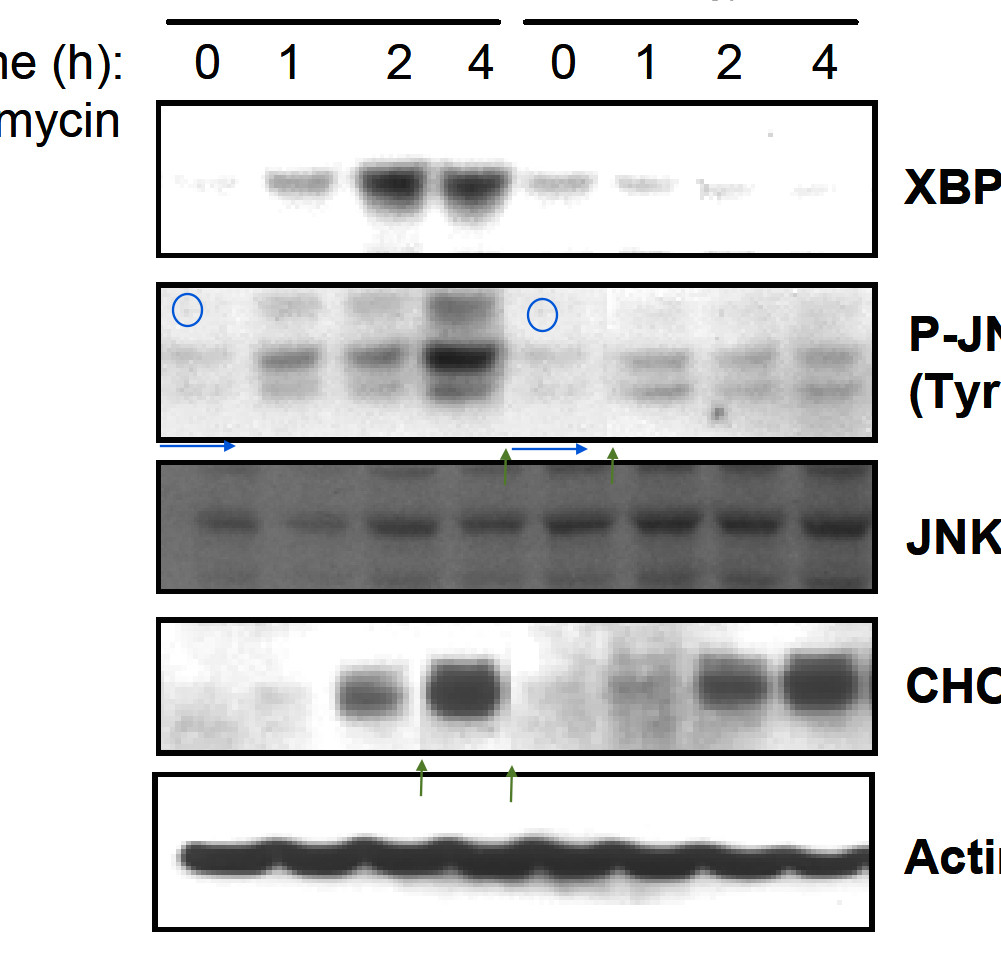
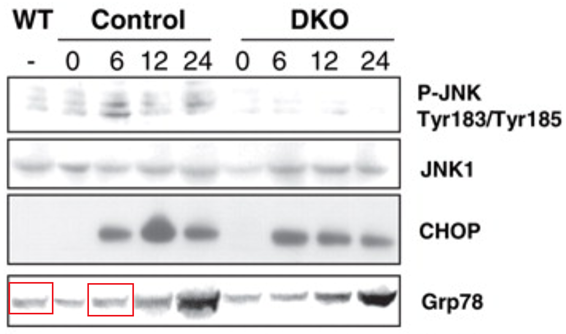
There were more issues with stealth splicing in other figures. The Retraction was published on 19 April 2024, 10 years after the evidence was posted. The note was very brief:
“Based on an internal analysis that began in February 2021, the authors have become aware of discrepancies in the controls shown in Figs. 1A and 6A and figs. S2, B and C; 3A; and S5, D to F. The authors are no longer confident that these figures support the conclusions. As a result, the authors are retracting the paper. Author Claudio Hetz disagrees with the decision to retract. Author Stanley J. Korsmeyer is deceased. Authors Bruno Antonsson, Michael C. Bassik, Paula Bernasconi, and Jill Fisher could not be reached.”
The Ballad of Claudio Hetz
“Patients affected with ALS now need to know that we are working for them […] We feel completely motivated and convinced to dedicate our careers to fight ALS.” Claudio Hetz, Photoshop artist.
The DFCI affair hit the news again. STAT News reported on 18 April 2024 about the retraction, mentioning in passing that “The issues with this paper, along with concerns with more than 50 other articles co-authored by four of Dana-Farber’s top researchers, were highlighted in a January blog post by the scientific sleuth Sholto David“:
“This most recent retraction in Science comes after an internal analysis began in February 2021. The paper is a prominent study that has had over 800 citations and is related to a field of research where Glimcher has made a substantial impact: understanding key molecular pathways central to endoplasmic reticulum stress. […]
Claudio Hetz, […] had opposed the retraction of the Science paper because he “stands by the conclusions of the paper, partly based on additional experiments done in his lab,” Meagan Phelan, Science’s communications director, told STAT in an email.”
STAT News mentioned that “In 2017, Hetz had responded to concerns raised about this paper in PubPeer“, but these professional medical journalists could not possibly tell you why he had to do this. Thing is, STAT News is under editorial orders never to mention For Better Science or Leonid Schneider, no matter what. So once again, we have to Google-translate the Chilean media, here La Tercera from 18 April 2024:
“On January 13, 2021, Chilean scientist Claudio Hetz , director of the Millennium Institute of Biomedical Neuroscience (BNI) , was accused of alleged irregularities in some published studies in which he participated as author or co-author.
The complaint was made by the website For Better Science , a website run by a former German scientist, Leonid Schneider, who now dedicates his time to reporting possible fraud and inconsistencies in research. Hetz was accused of presenting altered photographs.
Five days later, Dr. Manuel Kukuljan, dean of the Faculty of Medicine of the University of Chile, announced the constitution of an expert working group (with internal and external academics and researchers) to collect and evaluate the background information “in a transparent and impartial”. This was the result of that investigation: “No actions constituting scientific fraud were detected .
Despite the conclusion of the U. of Chile, this Thursday, the journal Science finally published a notice announcing that it was retracting the article.“
It was actually not a total whitewash: Hetz’ research was found to contain manipulations, while he himself was accused of recklessness, negligence and overall a problematic attitude to research ethics. Read here:
The Claudio Hetz Blues
“…Dr. Hetz seems rather to regret that he did not have better tools for editing the figures, so that the undeclared interventions would have gone unnoticed.” – University of Chile investigative report.
The article quotes an interview which Hetz gave to the newspaper Qué Pasa in September 2021, where Hetz says about For Better Science that it is “dedicated to attacking very important people in the field of science, including scientists who have won the Nobel Prize” and that it “seeks to make satire of science“. And about my article about his own research he said back in 2021: “”When I read it, it was a feeling of anger and injustice.”
And now this evil website reached him again! On the occasion of his fresh retraction, Hetz explains to La Tercera:
“Due of the age of the study, there are no longer the original backups to explain the questions.”
All other authors are not responsible
In April 2022, I wrote about an investigation in the Australian RMIT University. It was about their former professor Sheshanath Bhosale (now employed as professor at Goa University in India), who with his brothers Sidhanath Bhosale, principal scientist at CSIR-Indian Institute of Chemical Technology and Rajesh Bhosale, chemistry professor at Indrashil University in India, published lots of fake stuff which RMIT investigation asked to retract but which Bhosale brothers often managed to correct instead. Read here:
The papers which faked themselves
“These papers breached the Australian Code and RMIT Research Policy by not ensuring that conclusions are justified by the results and not responsibly disseminating research findings.” RMIT investigative report
I couldn’t publish the original report because RMIT threatened a copyright lawsuit, but I quoted from it anyway. The report declared the figures in Bhosale papers as fraudulent, but did not find any culprit.
Two retraction from March 2023 for Yeluri et al 2015 and Bhosale et al 2011: were not informative in this regard.

The two papers were retracted on 8 March 20223 The first notice mentioned an investigation by Monash University where Bhosale used to work before RMIT:
“Since publication, significant concerns have been raised about the integrity of data and figures in the article. There has also been a dispute raised by some listed co-authors about the legitimacy of the authorship list, whereby authorship had not been agreed to by all parties.”
The second retraction notice stated:
“RMIT University, where research had been conducted, confirm they are investigating issues related to the integrity of the published work.“
Eventually, the RMIT University found the culprit who faked everything! Spoiler: it was never a Bhosale!
Namdev V. Ghule, Sheshanath Bhosale, Sidhanath Bhosale, “Dipyrrolyl-
bis-sulfonamide chromophore based probe for anionrecognition,” RSC Advances, (2014) doi: 10.1039/C4RA04000G

even though they represent different experiments,’ while figure s5 presents ‘six vials that look unexpectedly identical, even though they represent different experiments.””
Prior to RMIT investigation, a correction was issued by the Royal Society of Chemistry (RSC) on 9 March 2022:
“The authors regret that an incorrect version of Fig. 1 was included in the original article.”
But then, on 13 January 2023 a retraction followed (highlights mine):
“The Royal Society of Chemistry, with the agreement of the authors, hereby wholly retracts this RSC Advances article following an institutional investigation carried out by RMIT University.
Fig. 1 and S5 both contain several identical vials representing different experiments. These figures were previously corrected before the Royal Society of Chemistry was aware that this paper was the subject of an institutional investigation.
The investigation found that this paper “breached the Australian Code and RMIT Research Policy by not ensuring that conclusions are justified by the results and not responsibly disseminating research findings”. A recommendation was given that this paper is retracted.
Dr Namdev V. Ghule was fully responsible for the error that happened in the figures. All other authors, Prof. Sheshanath V. Bhosale and Dr Sidhanath V. Bhosale, are not responsible for this error.
Who is this Namdev V. Ghule now? A nobody. A former PhD student of Sidhanath Bhosale at CSIR-SRF in Hyderabad, now employed by Henkel Adhesive Technologies India (according to his LinkedIn profile). Ghule is a perfect scapegoat.
Student, Meet Bus
What led to retraction of the Sensei RNA paper by Arati Ramesh in Bangalore: the “factually inaccurate, anonymous, and unverified” version, which “quite frankly, can be termed slander”. And a guest post by “Paul Jones” at the end!
Ghule was also officially blamed by RMIT here:
Namdev V. Ghule, Rajesh Bhosale, Kiran Kharat, Avinash Puyad, Sheshanath Bhosale, Sidhanath Bhosale, “A Naphthalenediimide-Based Fluorescent Sensor for Detectingthe pH within the Rough Endoplasmic Reticulum of Living Cells,” ChemPlusChem, (2014) doi: 10.1002/cplu.201402307

Also here. the figure was replaced with a correction on 16 March 2022:
“The authors of this Communication wish to correct Figure 1a and Figure 1b, which contained an error.[…]The authors apologize for this oversight and confirm that the conclusions are unchanged.”
Also here, the whole paper was now retracted on 19 April 2024 with this notice (highlights mine):
“The above article, published online on 20 November 2014 and available in Wiley Online Library (wileyonlinelibrary.com), together with a Corrigendum (DOI: 10.1002/cplu.202200080) have been retracted by agreement between the co-authors Namdev V. Ghule, Rajesh S. Bhosale, Kiran Kharat, Avinash L. Puyad, Sheshanath V. Bhosale, and Sidhanath V. Bhosale, the journal Editor-in-Chief Dr. Jonathan Faiz, and Wiley-VCH GmbH. The retraction has been agreed following the results of an investigation into the work by RMIT University. This investigation concluded that figures presented in the paper substantially departed from accepted practice and breached the Australian Code for the Responsible Conduct of Research and RMIT Research Policy by not ensuring that conclusions are justified by the results and not responsibly disseminating research findings. Dr. Namdev V. Ghule takes full responsibility for this error.“
Smut Clyde commented, referencing the Bhosale PubPeer record:
“Multiple papers by Sheshanath V. Bhosale and Sidhanath V. Bhosale have been retracted or corrected without any involvement from Dr Namdev V. Ghule, so the suggestion that Ghule is fully responsible for fakery in the present paper does not pass the test of Occam’s Razor.”
Indeed, one of the papers retracted in March 2023 did not have Ghule as coauthor.
Not considered satisfactory
A retraction for a team of Sicilian cheaters. This time, not from Messina, but from Palermo, led by Mirella Profita and Mark Gjomarkaj. Read about them here:
The Cigarette Mob of Palermo
On the gate of Constantinople was written, in a steel plate, the order of the Sultan: “All the males of the Gjomarkaj, generation after generation, from the cradle to the grave, will carry the title of Kapidan”
Mirella Profita, Loredana Riccobono , Angela Marina Montalbano, Anna Bonanno , Maria Ferraro, Giusy Daniela Albano, Stefania Gerbino , Paola Casarosa , Michael Paul Pieper , Mark Gjomarkaj In vitro anticholinergic drugs affect CD8+ peripheral blood T-cells apoptosis in COPD Immunobiology (2012) doi: 10.1016/j.imbio.2011.07.013

Aneurus inconstans: “Figure 4 and 5, flow cytometry plots of differently treated cells appear to share most of the measurements (boxes of same colors), and this seems to be highly implausible.”
The retraction was published on 18 April 2024:
“This article has been retracted at the request of the Editor-in-Chief.
The flow cytometry plots of differently treated cells displayed in Figures 4 and 5 are virtually identical. The corresponding author has responded to the concerns put to them by the journal, and the response has been not considered satisfactory by the Editor-in-Chief. Apologies are offered to readers of the journal that this was not detected during the submission process.”
The CNR researcher Profita deserves many more retractions.
We apologise to the authors
Now, a paper in a Taylor and Francis journal which was retracted TWICE. It came from the “Directly Target” Chinese papermill discovered by Smut Clyde:
The Master of the String-of-Sausages
“I am open to the possibility that they both outsourced their Western Blot production to a single, independent Wurst-Meister specialist.” – Dr Smut Clyde, art historian of the Chinese Papermill Renaissance.
Here it is:
Xianbao Huang , Ling Qi , Wei Lu , Ziye Li , Wuping Li , Fei Li MYCN contributes to the sensitization of acute myelogenous leukemia cells to cisplatin by targeting SRY-box transcription factor 4 Bioengineered (2021) doi: 10.1080/21655979.2021.1997697


The first retraction appeared on 1 February 2024, it mentioned:
“Since publication, significant concerns have been raised about the compliance with ethical policies for human research and the integrity of the data reported in the article.
When approached for an explanation, the authors provided some original data but were not able to provide all the necessary supporting information. As verifying the validity of published work is core to the scholarly record’s integrity, we are retracting the article. All authors listed in this publication have been informed.”
On 1 March 2024, the retraction was retracted:
“Due to a publisher error, a retraction notice was incorrectly issued on the article ‘MYCN contributes to the sensitization of acute myelogenous leukemia cells to cisplatin by targeting SRY-box transcription factor 4’, https://doi.org/10.1080/21655979.2021.1997697. We have now removed the retraction notice. We apologise to the authors for this error.””
Cell Cycle of Angry Axe-Wielding Tribbles
“For the most competitive papers, an ultra-rapid review (by members of the Editorial Board) is necessary to publish them a few days after submission.”, Misha Blagosklonny, on how his journals became papermill fraud bonanza
On 19 April 2024, the retraction of the retraction was retracted with this retraction (highlight mine):
“Following publication, the authors have raised significant concerns about the reliability of the data presented in the article. As the Editor and Publisher also have concerns about the integrity of the reported results, all parties have agreed to retract the article to ensure correction of the scholarly record.”
The really funny thing is that, as opposed to the retracted first retraction, the second retraction credits the authors, for heroically reporting themselves – for being papermilling fraudsters.
The role of journal reviewers
A retraction for some small-time papermilling crooks which wouldn’t be newsworthy were it not the author’s comments on PubPeer. Flagged in August-September 2023 on PubPeer:
Eithar K. El Adham, Amal I. Hassan, M. M. A. Dawoud Evaluating the role of propolis and bee venom on the oxidative stress induced by gamma rays in rats Scientific Reports (2022) doi: 10.1038/s41598-022-05979-1

The retraction appeared on 17 April 2024:
“After publication, concerns have been raised about some of the data shown in the Article, in particular that some of the images overlap and show signs of inappropriate image manipulation. Specifically:
- Panel d of Figure 6 appears to overlap with panel h of the same figure;
- A section of the left half of Panel g of Figure 8 appears to have been re-scaled and re-used in Panel h of the same figure;
- The top half of Panel k of Figure 9 appears to overlap with the bottom half of Panel o of the same figure.
Authors provided some of the original data, but these were insufficient to address the concerns. The Editors therefore no longer have confidence in the integrity of the data in this Article.
Amal I. Hassan disagrees to this retraction. Eithar K. El Adham and M. M. A. Dawoud have not replied to correspondence from the Editors.”
An attractive and “natural” target for fraudsters
“In the various excellent texts on paper mills the question is discussed why Naunyn-Schmiedebergs Archives of Pharmacology has become a target for fake papers. I oppose the assumption that we simply want to fill pages with pseudo-scientific content. We actually look for quality and good science.” – Prof Dr Roland Seifert, Editor-in-Chief
The corresponding author Amal I. Hassan, Professor at Atomic Energy Authority Nuclear Research Centre in Egypt, protested on PubPeer:
“I am writing to express my profound concerns regarding the recent decision to retract our paper. This decision represents a significant disservice to our research team. […]
It is important to note that the section questioned does not compromise our research’s fundamental results or integrity. However, the decision to retract the paper has placed us in a highly embarrassing position within the academic community.
Furthermore, I would like to know the role of journal reviewers who could review the research before publication. Why were we not initially alerted to any issues that might be grounds for this issue?
With sincere respect”
I thank all my donors for supporting my journalism. You can be one of them!
Make a one-time donation:
I thank all my donors for supporting my journalism. You can be one of them!
Make a monthly donation:
Choose an amount
Or enter a custom amount
Your contribution is appreciated.
Your contribution is appreciated.
DonateDonate monthly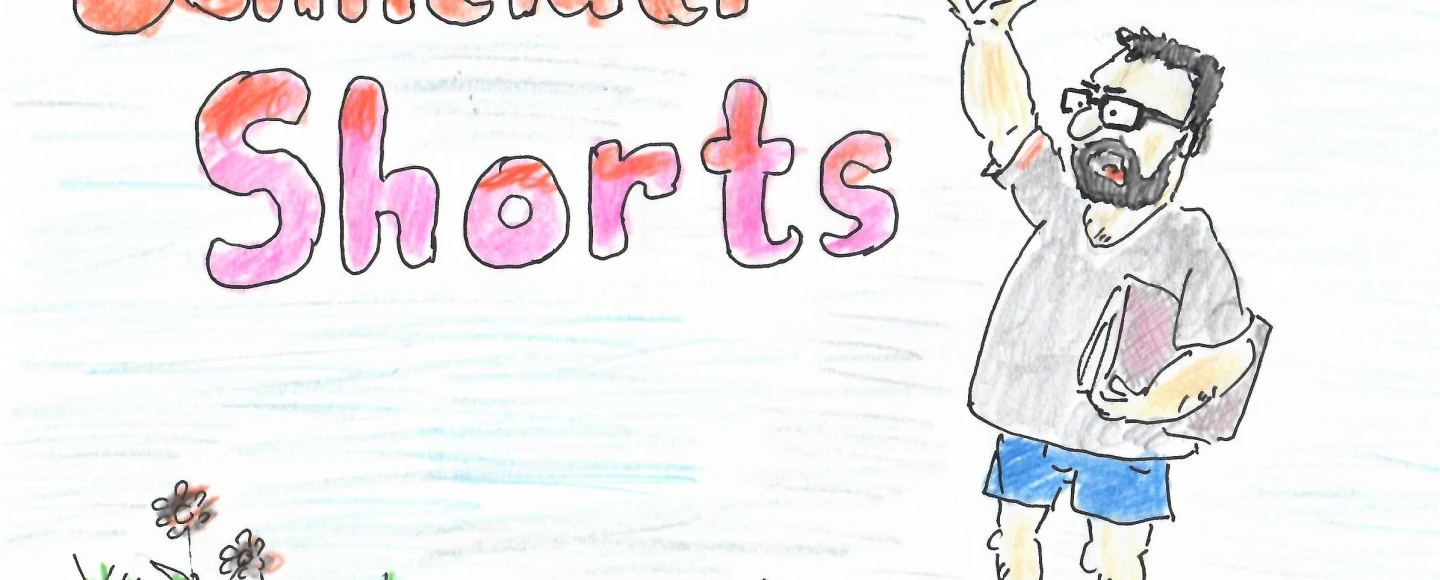





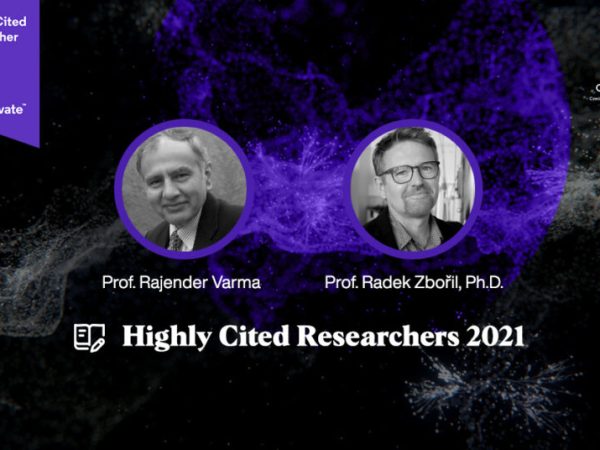


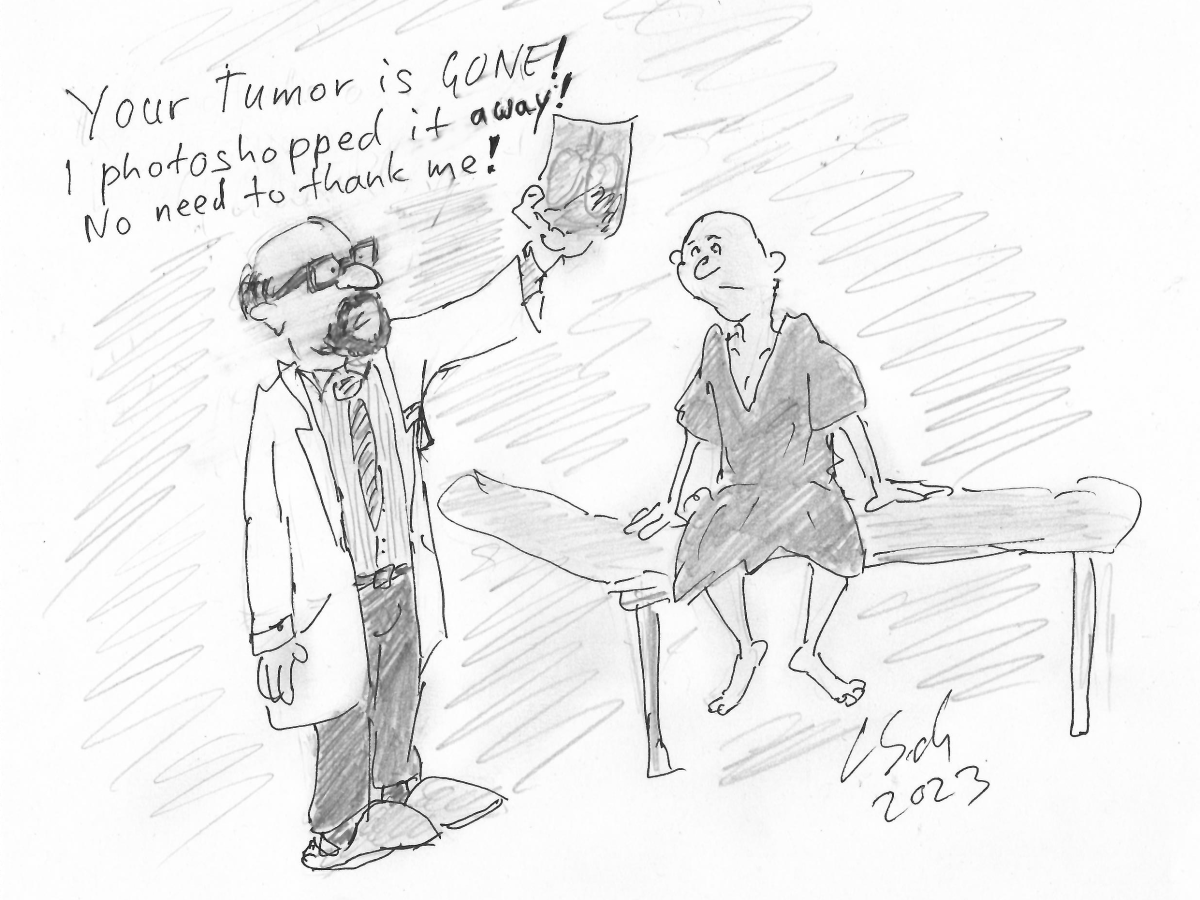




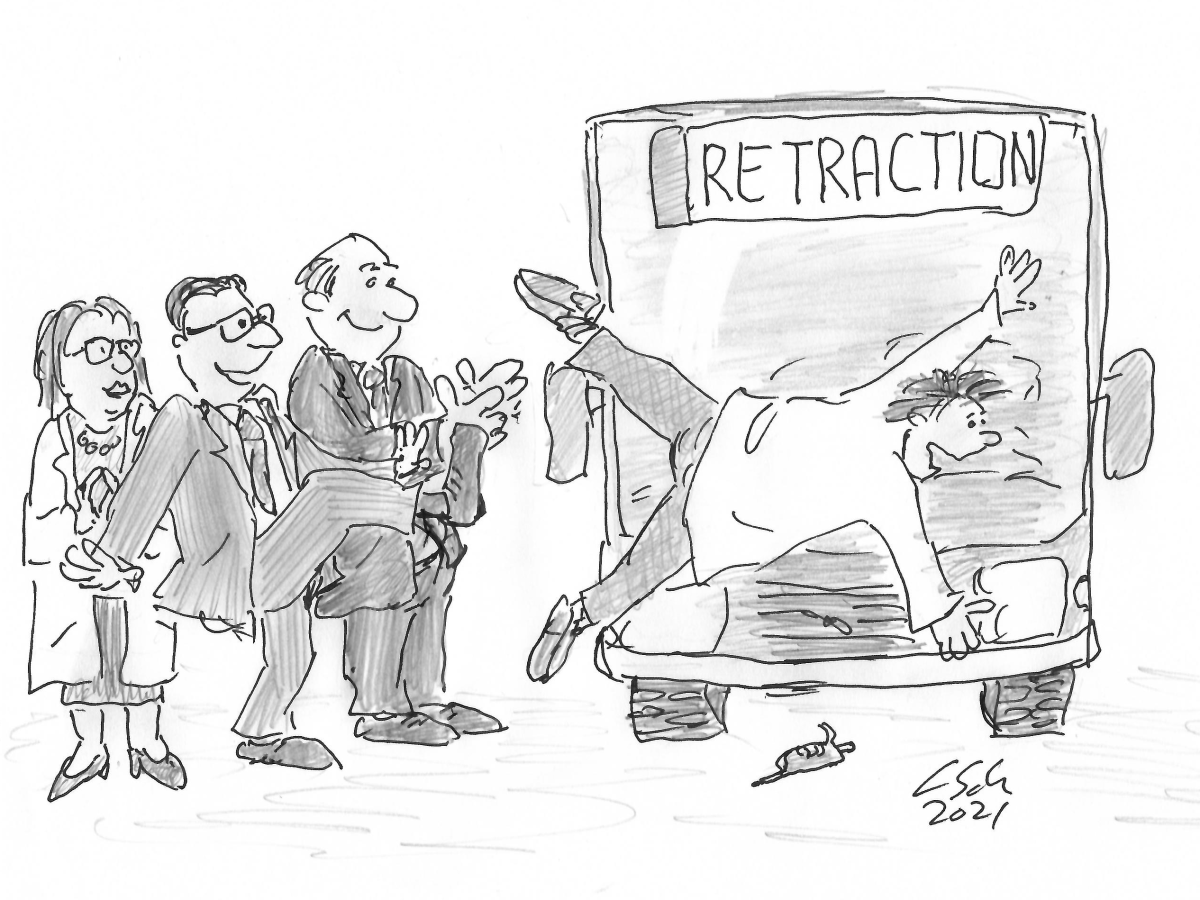
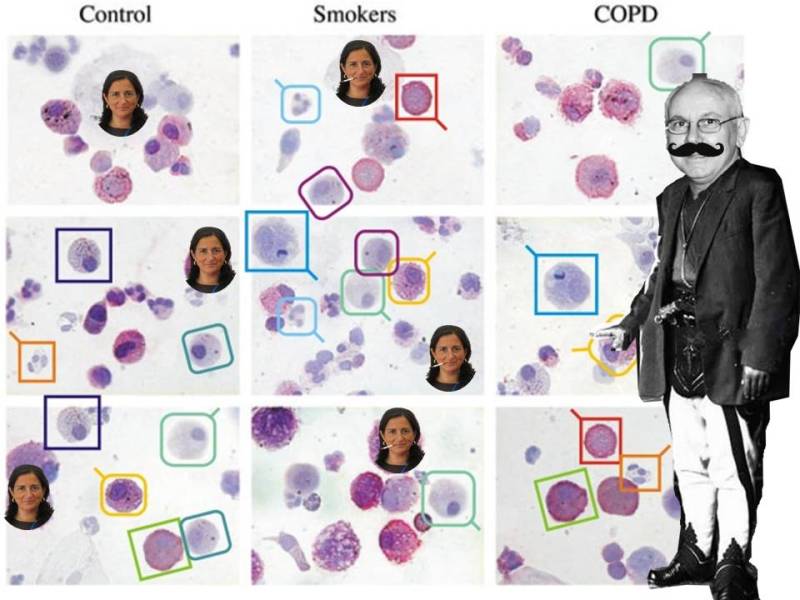




The following “Hopefully a mistake of publisher incompetence which will be corrected” should be understood as “unhopefully a deliberate action of publisher business model which will be disguised”.
LikeLiked by 1 person
Comment from anyone who is not Amal I. Hassan:
“Furthermore, I would like to know the role of journal reviewers who could review the research before publication. Why were we not initially alerted to any issues that might be grounds for this issue?”
Clearly it is the fault of the peer reviewers and editors for not having caught the author’s error.
No doubt this will eventually devolve to a standard disclaimer: “The authors would suggest to our esteemed readers that if an error were to be found in another one of our publications (heaven forbid!), that the peer reviewers of those papers be flogged until their attitude improves. That is all.”
LikeLike
I hope I am not out of line, but may I suggest that the most productive researcher in Norway is (was) actually Prof. Dieu Tien Bui? WOS highly cited etc.
https://www.usn.no/kontakt-oss/tilsette/dieu-tien-bui
LikeLike
self-citations always is an indication of bad practice and fraud. If one researcher misuses the basic ethics of self-citations there will be definitely more into his/her fraud. Both Beto and Dieu Tien Bui have extensive self-citations. They increased their H-index and total citations at least by 20%.
LikeLike
Suppose you mean too many self-citations, after all scientists gradually build on their research therefore self-citations are necessary and unavoidable.
The real problem is the citation cartels and they pump up the H-index. Scientific groups cite each other in separate authorship papers, for instance you can get 5 citations from a single paper and of course you return the favor, too. This is difficult to track unless dedicated detective work is performed, here in the blog several such cases feature. For Bui, Scopus shows H-index of 94 and 89 without the self-citations, i.e. self-citations add a little bit more than 5%, while for Berto is 76 and 64 respectively, almost 16% which is close to your estimate. Well, the latter seems to have missed a cartel, or 2, or 3, …
LikeLike
H-index and citations used to be the real and main problem, but now the problem is more serious: using these citation and H-index abuses to gain an advantage when applying for academic funding. Attribution and H-index abuses are going on all over the world, but in Western academia, it is funding fraud. These funds are won with fake citations and H-indexes. I have only caught this in Canada and Denmark by following open sources, so I will continue with an example from EU funding.
There are two different Iranian papermills and citationmill groups I noticed in Denmark, Both groups are working on energy systems. They are part of a citation and article cartel, mainly in Iran, Canada, China, Saudi Arabia, Malaysia. There are names that publish more than 30, 40, even 50 articles a year with this method. Within these articles there are hundreds of unnecessary citation to themselves and cartel members (so they can escape from “self-citation statistics”). This increases the total number of citations and the H-index. Then, they apply for EU funds with these performance indicators. Since the evaluators of EU funds attach importance to these performance indicators, these scammers gain an advantage.
The first thing after receiving research funding is to open a PhD student and/or postdoctoral research position. And they only hire corrupt Iranian researchers of their own mentality (here I respect the Iranian researchers who try to do research fairly, they have a very hard job with these scammers). With these researchers they publish more papers and expand the influence of their group.
In the examples I found, the links to Sweden, Denmark, and finally the Netherlands and Switzerland were clear (for Europe only). These are just two different groups of Iranians from Denmark. There are other cartels I’ve caught recently. There are those who are doing this business with Gulf capital (Qatar, UAE, and SA). Also, there are those in the Gulf-Canada-Turkey triangle. Besides, I’ve looked in China using translation apps. There are certain groups, but they are all Chinese. Moreover, they don’t have easy access to state funding sources (I think it is known what kind of gang they are). At the same time, although there are many Iranian researchers in China, I have not found that they can abuse funds in China so easily. So, compared to others, the biggest corruption is definitely in Europe and Canada.
These are my amateur research results. I think those who can do this search with professional resources can easily draw up a network of relationships.
To summarize, the problem is no longer just the H-index or the number of citations, but the manipulation of academic funding through these numbers, the mobility of corrupt researchers with these funds and the takeover of academic publishing. The problem is really big.
LikeLike
Spot on, the H-index is not the problem itself, but it is a tool to get to the “Holy Grail”. It’s an enormous problem since it has positive feedback loop as you have noted, more corrupt researchers teach corrupt PhDs and postdocs, who also become corrupt researchers and get tenure positions and in this way the cycle closes and goes on. It seems this has been steadily happening for at least 20 years meaning we have no less than 2 generations of such “researchers”.
Of course, all this also applies to western “researchers” but they’re a little bit more difficult to be caught. Nevertheless, almost all institutions in Europe, US and Canada seem to have already been plagued with such “researchers” who unsurprisingly vehemently defend each other.
LikeLike
Juvenile pigs paper is out. Traumatic!
https://www.sciencedirect.com/science/article/pii/S0006899324001574?via%3Dihub
LikeLike
I knew I would find it eventually. The Hetz paper was first reported on science-fraud in 2011… https://web.archive.org/web/20121127210648/http://www.science-fraud.org/?p=243
It was part of a series on Hetz (here was the 3rd installment: https://web.archive.org/web/20121128014013/http://www.science-fraud.org/?p=787)
LikeLiked by 1 person
This title has ceased (2024).
LikeLike
Great job, Alex. Pity that Dalmeet S Chawla and his ACS news editors paymasters deny you the credit.
LikeLike